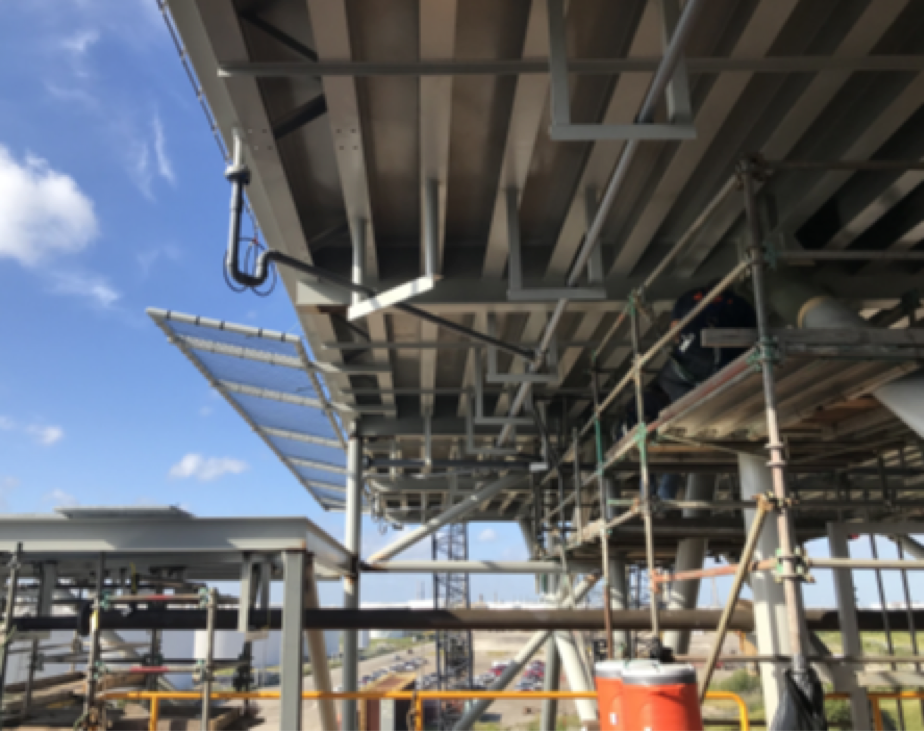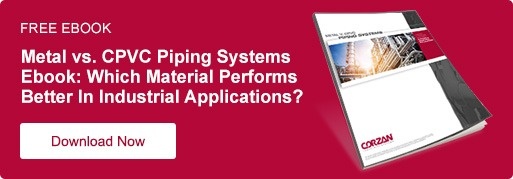Silent Hazard Plagues Industrial and Manufacturing Systems
Industries invest millions of dollars each year in technology and equipment to grow their productivity, profits and performance. Yet, a silent hazard in the form of corrosion continues to plague industries around the world, with the global cost of corrosion surpassing $2.5 trillion each year, which is 3.4 percent of the global GDP. Corrosion costs the U.S. production and manufacturing sector $17.6 billion annually.
These estimates are based on the results of a two-year NACE International study “International Measures of Prevention, Application and Economics of Corrosion Technology” (IMPACT), which was released during the CORROSION 2016 conference in Vancouver, B.C. The study found that implementing corrosion prevention best practices has the potential to save 15 to 35 percent of the cost of corrosion damage or $375-875 billion on a global basis each year.
The good news is that most corrosion failures – whether bridges collapsing or pipes leaking and contaminating industrial processes – can be prevented. Implementing appropriate corrosion prevention and control methods will cut costs, protect public safety and prevent damage to property and the environment.
One of the easiest and most effective methods to eliminate corrosion is to replace metal piping systems with a material that does not corrode, such as CPVC piping, fittings and valves. And even though non-metallic materials are readily available, alternatives such as CPVC tend to fall into a blind spot for many designers seeking piping solutions.
Designers, in some instances, have not evolved their engineering thought processes to consider alternative materials and technology for construction. The greatest impediment to solving corrosion-related issues, therefore, may be rooted in the absence of education and training for engineers/designers and the lack of company leadership’s involvement in construction-related decisions.
Non-Metallic Piping Materials Often Lie Outside Engineers’ Normal Line of Vision
Webster’s New World College Dictionary, Fifth Edition, provides several definitions for the term blind spot, including “a small area, insensitive to light, in the retina of the eye where the optic nerve enters.” This description may be relevant to the manufacturing industry as non-metallic piping systems often fall outside the normal line of vision for engineers and designers who do not consider non-metallic options in 90 percent of industrial applications.
Results of a study featured on www.corrosioncost.com entitled “Preventive Strategies” lists three recommendations to help control corrosion:
- Increase awareness of the considerable cost of corrosion and the potential for savings
- Alter the misperception that nothing can be done about corrosion
- Change policies, regulations, standards and management practices to increase corrosion cost-savings through solid corrosion management.
For years, metal piping systems have been the status quo across industrial environments primarily because metal systems are durable and familiar. But facilities across a range of industries are switching to non-metallic piping such as CPVC after witnessing performance benefits such as lower installation and life-cycle costs, less downtime, improved process efficiency and increased productivity.
Corrosion resistance is one of the most significant advantages CPVC piping systems offer over metal. Pipes and fittings made with Corzan® CPVC are inherently inert to most acids, bases, salts and aliphatic hydrocarbons to eliminate corrosion. Corzan CPVC offers other performance advantages such as high impact resistance, pressure capabilities and heat distortion temperature (HDT), making the material ideal for harsh and highly corrosive industrial applications that once relied on metal.
The Need for Corrosion Training
Webster’s provides a second definition for the term blind spot as “a portion of a field of vision that is obstructed to the viewer; specifically, any area behind a vehicle that a driver cannot view with his or her rearview mirrors."
Traditional engineering training at the university level often lacks the inclusion of polymer chemistry and materials education. The result is engineers and designers who are obstructed by their training so they cannot view and understand the advantages non-metallic materials such as CPVC offer relative to corrosion.
Education and training are especially important as the IMPACT study identifies the need for more corrosion management professionals – especially since a significant number of retirements are projected within this area during the next 10 years.
“There needs to be a renewed sense of priority for corrosion engineering amongst employers and educators,” said Jim Feather, NACE International President. “NACE has provided training and professional development to tens of thousands of engineers and professionals in more than 130 countries, but the industry needs more academic programs and more universal means of communication across all levels of business.”
Lubrizol is helping to educate engineers and designers about non-metallic piping options to eliminate corrosion. Company experts often provide materials consultation by sharing information and insight with designers, engineers, owners and others. Lubrizol experts are prepared to discuss thermoplastics, in general, and the specific performance advantages of CPVC.
The Corzan website also offers product and application insight via spec sheets, brochures, e-books, test videos, webinars, case studies and more. The site includes the Corzan CPVC Chemical Resistance Chart, demonstrating how Corzan CPVC performed against more than 400 different chemicals, including corrosive substances.
A Need to Accept Change and New Ideas
The third Webster’s definition for the word blind spot is “a prejudice, or area of ignorance, that one has but is often unaware of.” People, in general, typically resist change – and the present environment is not kind to new thoughts and ideas that break history’s mold.
Sometimes resistance to change results from a lack of knowledge and the inability to push forward with the science. Transitioning away from the known – in this case metal – to perhaps an unknown such as CPVC can be difficult as a misstep could cost a company millions of dollars.
But engineers and designers must learn to trust the science. Engineers sometimes perceive new materials as potentially costing millions of dollars and allow the cost to overshadow their decisions when, in reality, corrosion already costs trillions. Various case studies attest to the reliability and performance of CPVC, such as those featured on the Corzan website.
Communicating with Senior Level Leadership is Essential
The final definition for the term blind spot is “an area where radio reception is poor.” This description is relevant to the corrosion issue as the leadership in many industrial environments is unreceptive to new ways of approaching corrosion problems and understanding possible solutions. Senior level leaders may be unwilling to hear what the science is telling them.
According to NACE International, the IMPACT study’s most critical finding was how important it is to place corrosion technology into an organizational management system context and justify corrosion control actions by emphasizing their business impact. This can be accomplished by implementing a corrosion management system (CMS) that is understood and supported at every level within an organization – from the top down.
Corrosion threats should be mitigated so that resource expenditures are balanced against the benefits gained. An ROI analysis may be helpful to determine whether a corrosion management investment is appropriate. Additional details about the economics of corrosion, cost-analysis tools, educating and training trends and case studies from around the world are included in the IMPACT study.
Adopting Technologies to Prevent/Control Corrosion Could Save Billions
The use of appropriate corrosion prevention and control technologies has the potential to increase public safety, prevent damage to property and the environment. and save billions of dollars. Making strides in corrosion prevention and control, however, will require eliminating blind spots that can impede the adoption of materials and technologies such as CPVC. Corrosion strategies will also require the support of senior level management.
Designers/engineers can depend on non-metallic materials such as Corzan CPVC to eliminate corrosion. Corzan CPVC is backed by 60 years of successful applications across a range of industries and the scientific expertise of Lubrizol. Experts from Lubrizol have also participated with NACE in developing key strategic groups. To learn more, contact a Corzan CPVC materials expert for a free technical consultation or contact a Corzan partner manufacturer.
Details for this blog were taken in part from the following:
https://www.corzan.com/blog/how-to-eliminate-pipe-corrosion-in-industrial-processing-applications
https://www.corzan.com/en-us/metal-v-cpvc-piping-systems


